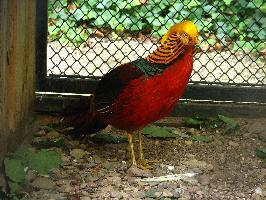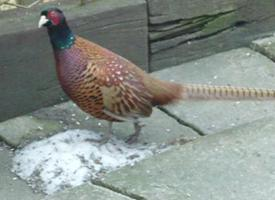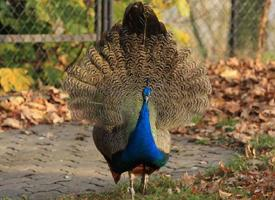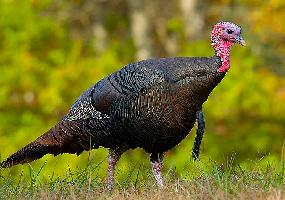
Poids et mesures
| Longueur | de 90 à 105 cm |
|---|
Description de l'animal
The Golden Pheasant, known scientifically as Chrysolophus pictus, is a striking bird that belongs to the pheasant family. This species is native to the mountainous forests of western and central China, although it has been introduced to other countries, including the United Kingdom, where it now has established populations. The bird's natural habitat includes dense forests and woodlands, where it can be found foraging on the forest floor for its diet, which primarily consists of seeds, grains, and insects.The most remarkable feature of the Golden Pheasant is its vibrant plumage, which makes it one of the most visually stunning birds. The male, in particular, boasts an array of colors that seem almost too brilliant to be natural. Its body is a deep golden-yellow, contrasted with bright red underparts. The wings are dark red with blue and brown spots, and the tail is long and elegantly tapered, featuring dark red and light brown stripes. One of the most distinctive features of the male is its golden crest, which resembles a fan and is tipped with red. This crest, along with the cape, which can be raised during courtship displays, adds to the bird's exotic appearance. The face is also adorned with bright yellow eye patches and a small, black bill.
In contrast, the female Golden Pheasant is much more subdued in coloration, which helps her remain inconspicuous especially during the nesting season. She is primarily mottled brown with a pale brown face, throat, and underparts, allowing her to blend seamlessly into the forest floor, an adaptation that likely evolved as a protective measure against predators.
Golden Pheasants are known for their elusive nature, often preferring to run rather than fly to escape danger. Their flight is strong and direct when needed, but they spend most of their time on the ground. They are relatively solitary birds, although they may form small flocks outside the breeding season. During the breeding season, males become more territorial and perform elaborate displays to attract females. These displays include spreading their cape and tail feathers, erecting their crest, and emitting a series of calls.
Breeding usually occurs in the spring, with the female laying a clutch of 8-12 eggs in a well-hidden nest on the ground. She is solely responsible for incubating the eggs and raising the chicks, which are able to feed themselves shortly after hatching but remain under the mother's care for several weeks.
The Golden Pheasant, while not currently listed as endangered, faces threats from habitat loss and degradation, primarily due to deforestation and human encroachment on their natural habitats. Conservation efforts are crucial to ensure the survival of this species in the wild, including habitat protection and management initiatives.
In conclusion, the Golden Pheasant is a magnificent bird that captivates the imagination with its brilliant colors and exotic appearance. Its beauty has made it a popular bird in aviaries around the world, but it is in the wild, within the dense forests of China, that the true splendor of the Golden Pheasant can be fully appreciated.
Animaux similaires
Nouvelles photos d'animaux
Top 10 des animaux
- Dolphin gull (Leucophaeus scoresbii)
- Diana monkey (Cercopithecus diana)
- Moustached guenon (Cercopithecus cephus)
- Galápagos tortoise (Geochelone nigra complex)
- Japanese macaque (Macaca fuscata)
- Stone loach (Barbatula barbatula)
- Russian tortoise (Testudo horsfieldii)
- Greek tortoise (Testudo graeca)
- Common flying dragon (Draco volans)
- Vendace (Coregonus albula)


